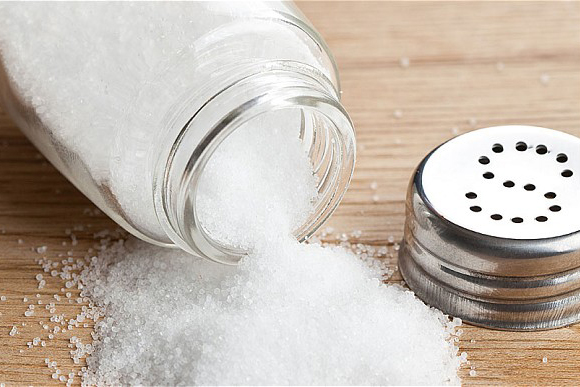processed foods
A new study claims that dietary salt restriction can be beneficial only to a minority of hypertensive people who consume too much salt.
The recommended daily sodium intake from the AHA (American Heart Association) is less than 1.5g. The meta analysis published in The Lancet observed that sodium consumption below 3g a day was associated with an increase in cardiovascular risk and death; and that only when 7g a day was consumed was there an increase in risk in hypertensive people, not in normotensive people.
Tania Mesa – Nutritionist and Nurse from Neolife
A study, published in The Lancet has called into question the current recommendations for restricting salt intake.
How tasty are the tasty foods! … Most people like to eat salty foods and this is something that the food industry knows all too well.
Almost all processed foods contain large amounts of sodium to make them tastier and more palatable. Contrastingly, doctors tell us not to consume too much salt as an effective way to prevent high blood pressure, coronary heart disease and strokes. So, if the body asks for salt because salt makes food richer and taste better then how can it be so bad for us?
An article published in the prestigious journal, The Lancet (1) only a few weeks ago has revolutionized the world of medicine and, in particular, that of cardiology. This article has presented the results from a large meta-analysis that includes four large prospective studies of more than 133,000 hypertensive and normotensive people, in which their salt intake was estimated according to the measurement of sodium in their urine.

The results of the study have confirmed that salt restriction in a diet can be beneficial only for a minority of hypertensive people who consume a lot of salt and, furthermore to prevent others from benefiting from the intake of sodium as part of their normal diet could potentially be harmful. The debate is now on the table. The authors of the study have proposed that it is necessary to review all recommendations relating to health and nutrition where a restriction of salt was previously recommended as part of an on-going treatment or prevention measure. On the other hand, the powerful AHA (American Heart Association) has issued a statement in which it literally states “the population should not be confused by this erroneous study” and reinforces their recommendation about adherence to a low sodium diet.
The recommended daily sodium intake from the AHA is less than 1.5g, a smaller amount than other scientific societies who place the limit at 2.3g. However, the average salt intake in the US is 3.4g per day. The meta analysis published in The Lancet observed that sodium consumption below 3g a day was associated with an increase in cardiovascular risk and death; and that only when 7g a day was consumed was there an increase in risk in hypertensive people, not in normotensive people. As we can see, the figures do not always correlate.
“The great salt debate”: the controversy that confronts the AHA, the FDA and scientific researchers.
AHA spokespersons consider that it is misleading to use the value of sodium present in morning urine as a means to determine daily sodium intake, instead of measuring the amount of sodium in urine during 24 hours. Furthermore, they consider that a single determination regarding sodium levels in the morning urine does not accurately reflect the average sodium intake over a patient’s lifetime. In their defense, the authors of the study published in The Lancet have confirmed that the estimation of daily sodium intake using a single measurement taken from the morning urine is correct and reliable. This position is further reinforced by numerous publications in the most prestigious science journals as well as being the only way to be able to carry out studies on tens of thousands of people. They also argue that many public health recommendations relating to hypertension, diabetes or cholesterol are based on a single measurement. On the other hand, they consider that the AHA recommendation to limit your daily intake of sodium to less than 1.5g is without scientific justification as such limitation is not proven to reduce cardiovascular risk and, nevertheless, there are studies that show that such low sodium intake can actually produce the opposite effect and increase cardiovascular risk.
“The great salt debate” has generated much controversy within the scientific community as some have accused the AHA of not respecting the scientific results, whilst others have accused the meta-analysis researchers of presenting the wrong study, the FDA (Food and Drugs Administration) have produced their own profile…
And what do we think at Neolife? Well, the answer is common sense: the amount ingested should depend on each person. If the values stated for brachial and central blood pressure (measured at the aortic root) and the markers for arterial stiffness and elasticity that we measured with the Sphygmocor device are normal then there is no need to limit the consumption of salt. In the event that these values are sub-optimal then it is our recommendation that you should reduce salt intake as far as possible, -take steps to avoid table salt, that is to say using the salt shaker, since kitchen salt is sufficient-. And if your values are clearly high then it is advisable that you avoid both table salt and kitchen salt, as well as salty foods.
BIBLIOGRAPHY
(1) Mente, A., O´Donnell, M, Rangarajan, S., et al. “Associations of urinary sodium excretion with cardiovascular events in individuals with and without hypertension: a pooled analysis of data from four studies”. Published Online: 20 May 2016. The Lancet.
